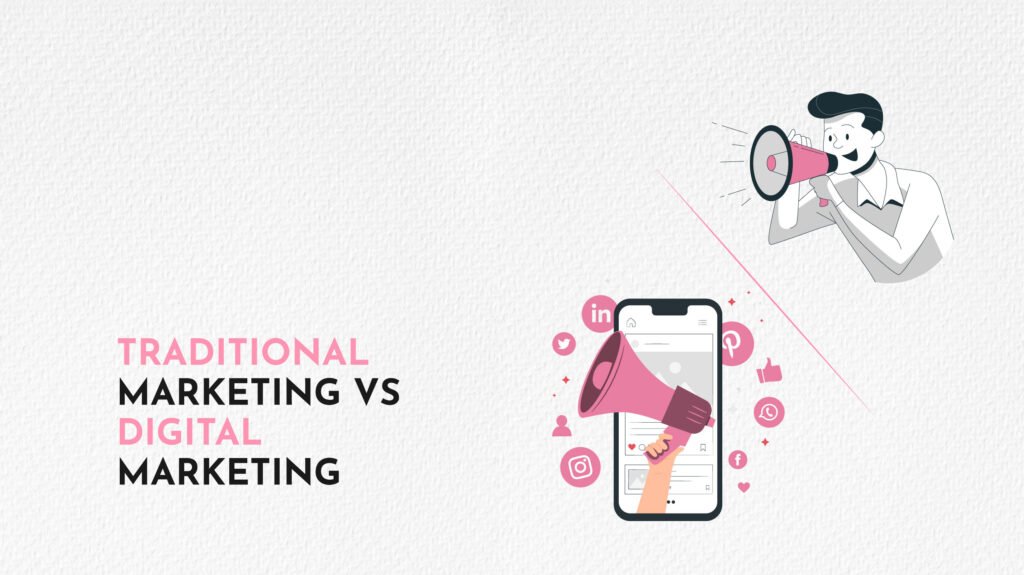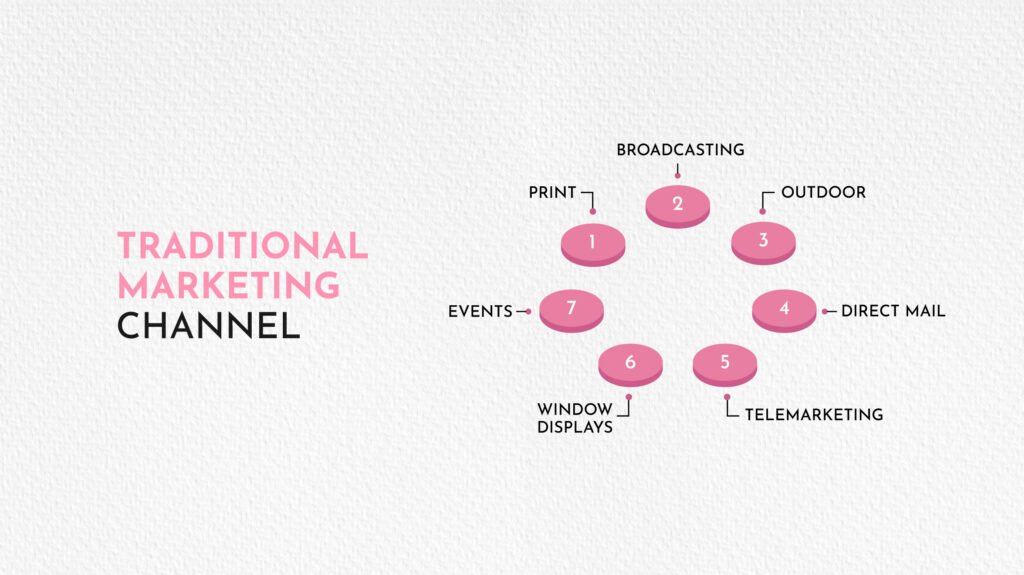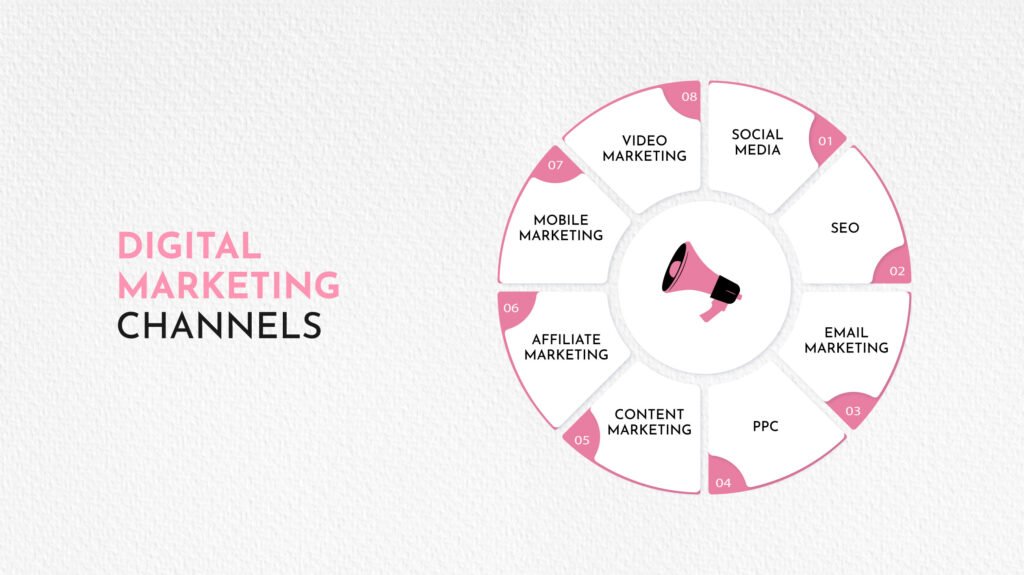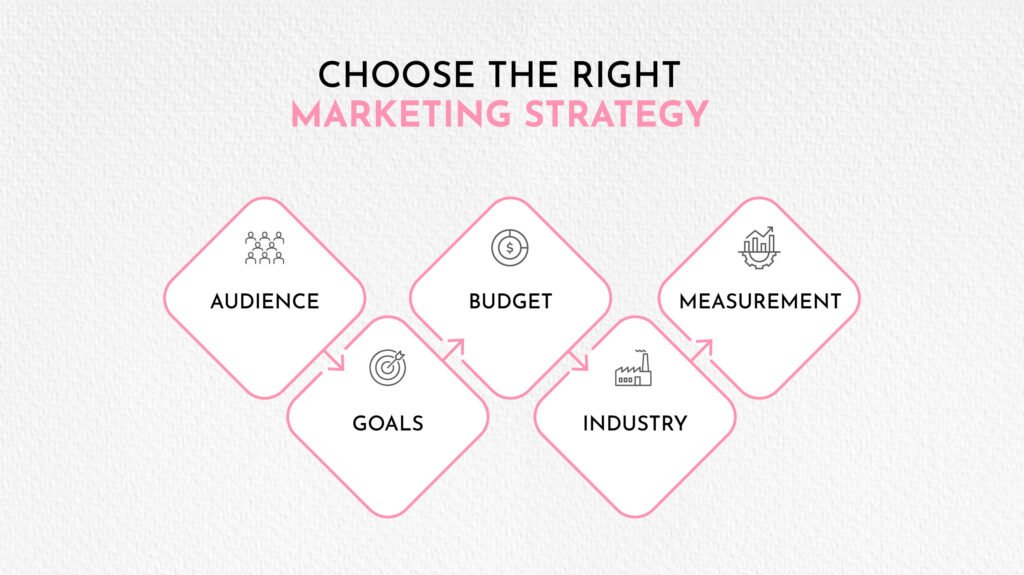
Hello busy folks! Are you running a business or dabbling in marketing? Then you’re probably making strategies on where to use your budget in 2025. And when it comes to picking between traditional marketing vs. digital marketing, it’s a complex one. This is like choosing between a cozy, homemade diner and your favourite fast food place. Both are great, but which one’s right for your needs? Should you just put advertisements on billboards or go all-in on Instagram ads? Let’s dig deep to understand the difference between digital marketing and traditional marketing. Weigh what each brings to the table. And figure out how to implement both or either of them in 2025. Take your seat, and let’s get started!
Imagine walking down the road and then suddenly you discover a giant billboard. Or maybe you’re flipping through a magazine and a glossy ad makes you pause. That’s traditional marketing. The classic, offline stuff that’s been around since the dawn of advertising. It’s the traditional way of reaching people through real-world channels. Like TV commercials, radio jingles, newspaper ads, or flyers stuffed in your mailbox. Without the need of internet, just good old-school marketing.
Traditional marketing gives a real world feeling. Because you can touch it or hear it. According to a 2023 Statista report, 68% of folks still notice outdoor ads. And when it comes to global billboard market, it is chugging along at a 7.9% growth rate through 2030. Whether it’s a catchy radio tune to a coupon in the mail, traditional marketing has its own magic. Whichever formate we see them, they leave a mark in everyday moments.
So, have you ever thought why traditional marketing is still in place in this age of internet? It’s because they build trust and hit the right crowd. If you’re trying to reach locals or folks over 50, this is your way. A 2024 Nielsen study found that 72% of people over 50 tune into TV every day, spending double the time on traditional media compared to younger folks. That’s a big chunk of potential customers.
Plus, traditional marketing has a knack for making your brand feel legit. A sharp ad in a trusted newspaper or a killer Super Bowl commercial (which raked in $500 million in 2024!) screams “we’re the real deal.” And let’s not forget the sensory stuff. A shiny coupon or a jingle repeatedly playing inside your head, has different impact from a pop-up ad. For small businesses like a corner bakery or a local gym, traditional vs. digital marketing often used to swing toward traditional. The goal was to win over the community. But that was before the internet.
Now, let’s turn the table. Digital marketing gives you the pass to the online world. You get to directly connect with people through social media, search engines, emails, or websites. Familiar with those targeted Instagram ad, a Google search result? That makes you question how do they know your thoughts. Or an email that feels like this is exactly what you’re looking for. In 2025, digital marketing is a beast. By 2026 global spending is expected to hit $876 billion , according to eMarketer.
So, what makes digital marketing this much desired? It’s smart and flexible. You can exactly target who you want to reach. Like 25-year-old housewives in Seattle and see how they engage in real-time. With 5.07 billion internet users worldwide in 2024 (DataReportal), digital marketing has open the door to audiences far beyond your backyard.
Why put your money on digital marketing in 2025? It’s wallet-friendly, laser-focused, and lets you talk directly to your customers. A 2024 HubSpot report says email marketing gives you $36 back for every $1 spent. Pretty sweet! You can also use data to pinpoint your audience, like targeting folks who’ve searched for yoga classes nearby. Google Ads, for instance, can boost conversions by 30% by focusing on search intent (Google, 2024).
Digital marketing is all about connection. Platforms like TikTok or Instagram let you chat with customers, and 82% of marketers lean on social media to share content (Digital Marketing Institute, 2024). People now want brands to get them. And the digital marketing vs. traditional marketing differences has already proved digital’s edge in creating personal, engaging experiences.
No Quick Edits: Once your ad’s out there, it’s set in stone. No tweaking allowed
At its core, traditional marketing vs. digital marketing is about how you reach and connect with your targeted people. Traditional marketing uses offline tools like TV, radio, or print to convey your message to a wide range of audience. Digital marketing lives online. Spread around social media, websites, or email to deliver targeted, interactive content that feels personal.
Here’s how they compare:
Aspect
Traditional Marketing
Digital Marketing
Medium
Offline (TV, radio, billboards)
Online (social media, websites, email)
Reach
Local/regional, 68% notice outdoor ads (Statista, 2023)
Global, 5.07B internet users (DataReportal, 2024)
Cost
High, e.g., $332M for political TV ads in 2024 (Landingi)
Low, e.g., $36 ROI per $1 on email (HubSpot, 2024)
Targeting
Broad, less personal
Precise, data-driven personalization
Engagement
One-way, limited interaction
Two-way, 82% use social media (DMI, 2024)
Measurement
Hard to track, 53% data-driven (Gartner, 2022)
Real-time analytics via Google Analytics
Flexibility
Fixed, slow to adjust
Dynamic, tweak on the fly
Longevity
Fixed duration (e.g., 30-day billboard)
Evergreen content (blogs last forever)
The digital marketing vs. traditional marketing differences come down to what you’re after. Want to build local trust? Traditional marketing is your go-to. Need global reach and hard data? Digital marketing wins. But honestly, the magic often happens when you mix the two.

Traditional marketing still packs a punch in 2025. Here’s what’s out there:

Digital marketing channels are like a candy store. So many options! Here’s what’s hot in 2025:
Marketing’s moving at warp speed. For traditional marketing, experiential stuff like pop-up events is stealing the show, boosting brand recall by 20% (EventTrack, 2024). Digital billboards, which mix traditional vs. digital marketing, get 15% more attention than static ones (Outfront Media, 2024).
On the digital marketing side, AI is changing the game. AI-powered ads tailor content on the fly, bumping click-through rates by 25% (Google, 2024). Augmented reality (AR), like virtual try-ons, is expected to drive $50B in ad spend by 2026 (eMarketer). And don’t sleep on voice search. 55% of households use smart speakers (Nielsen, 2024). To stay ahead, weave these trends into your digital marketing versus traditional marketing plan.

So, how do you choose between traditional marketing vs. digital marketing? It’s all about knowing your business. Here’s what to think about:
A 2025 HubSpot survey says 78% of businesses mixing both see better ROI than those picking one. Don’t choose, combine!
Why settle for one when you can have the best of both? A hybrid approach blends traditional vs. digital marketing for maximum impact. Picture a local pizza joint handing out flyers to neighbors while running TikTok ads for younger crowds. Apple’s iPhone 16 Pro launch (Landingi) paired TV commercials with SEO-optimized landing pages, spiking traffic by 40% in 2024.
Trade shows are a great example. Boost your booth with LinkedIn posts, then dazzle attendees with bold banners. A 2024 EventTrack study found hybrid trade show campaigns lifted leads by 35%. Use traditional marketing for visibility and digital marketing for targeting and tracking. It’s a winning combo.
Looking to 2026, digital marketing will lead the charge, with spending expected to top $1 trillion globally (eMarketer). AI and AR, like virtual product demos, will keep pushing the envelope. But traditional marketing isn’t fading. Print ads will get smarter with QR codes. 30% of 2025 print ads will have scannable links (Statista). Trade shows are also growing, with 65% of B2B companies boosting event budgets (EventTrack, 2025).
The future is all about blending traditional vs. digital marketing. Hybrid campaigns will rule, combining physical touchpoints with digital data to create seamless customer experiences.
Got a small budget? No sweat! Here’s how to make waves in 2025:
Hit Trade Shows: Affordable booths at local events boost visibility. 70% of small businesses get leads from trade shows (EventTrack, 2024).
Don’t mess this up! Here’s what to avoid:
In 2025, the traditional marketing vs. digital marketing battle isn’t about picking a winner. It’s about playing your cards right. Traditional marketing brings trust, local vibes, and a tangible feel, while digital marketing delivers precision, affordability, and a global stage. Know your audience, align with your goals, and watch your budget to craft a strategy that works. A hybrid approach, blending traditional vs. digital marketing, often steals the show, with 78% of businesses seeing better ROI from mixing both (HubSpot, 2025). Whether you’re a corner shop or a global brand, use the digital marketing vs. traditional marketing differences to fuel growth and stay ahead in 2025.